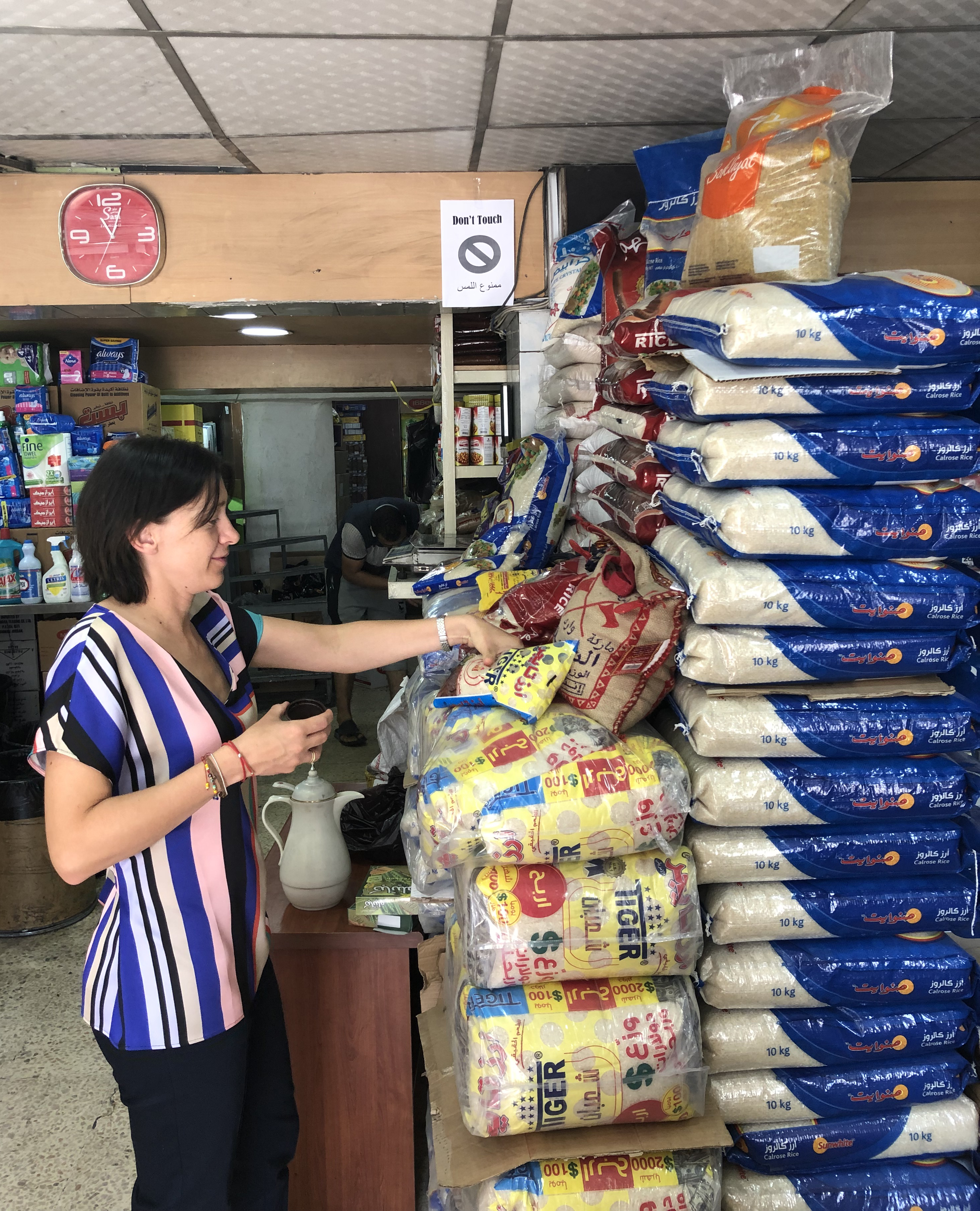 USA Rice's Eszter Somogyi does her own rice brand inspection
USA Rice's Eszter Somogyi does her own rice brand inspection
Jul 02, 2019
AMMAN, JORDAN – Jordan is a relatively small country where rice is a staple food, and though the country produces no rice, and the average yearly consumption is estimated at 53 pounds per capita. With a total population of 10.5 million, 70 percent is Jordanian, the rest being refugees mostly from Syria, as well as foreign nationals from Palestine, Egypt, and other countries.
The country currently is suffering from the adverse effects of the Syrian Civil War and the ongoing crisis in Iraq, and consequently trade with its traditionally two largest markets is a victim of conflict in these two countries.
“The high number of refugees puts pressure on the local economy, as well as on the food supply,” said Eszter Somogyi, USA Rice director for Europe, Middle East, and Africa, who visited with local traders here last week. “There is a general lack of liquidity in the market and coupled with rising fuel and electricity prices, Jordanian consumers are having to make increasingly difficult choices when it comes to food purchases.”
Jordanian consumers have a preference for medium grain varieties due to its stickier consistency which is better suited to traditional local dishes like mansaf, lamb cooked with a yogurt sauce served over rice.
“They have a strong preference for U.S. origin rice, and it has been the market leader here for the past few years, appreciated for its high quality and cooking characteristics,” said Somogyi. “However, high U.S. prices coupled with the local economic situation in the past year has resulted in increased imports from cheaper and geographically closer origins like Portugal and Italy, as well as some quantities from China.”
There are no restrictions on rice trade, which is conducted through private companies, with total imports estimated at 190,000 MT for 2019. In 2017, U.S. rice sales totaled 141,000 MT, followed by a drop to 81,000 MT in 2018. Sales in Jan-April 2019 amounted to 38,000 MT, 5 percent higher than the same period in 2018.
“In this economic environment, it is important to continue to support local U.S. rice brands with promotional activities to maintain their presence on the market and ensure continued U.S. rice sales,” said Somogyi. “During the trade visits last week, several promotion ideas were discussed including outdoor and online media advertising planned for this coming autumn when Jordanian families return from the summer break and the school year begins.”